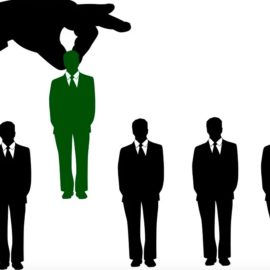

This article is an excerpt from the Shortform book guide to "How Not To Be Wrong" by James O'Brien. Shortform has the world's best summaries and analyses of books you should be reading.
Like this article? Sign up for a free trial here.
What is toxic masculinity, and why does it matter? What can be done about it?
It’s probably fair to say that toxic masculinity is talked about more than it’s understood. It’s important to understand what it truly means and how it harms both men and women.
Continue reading for a brief overview of toxic masculinity and its effects.
Toxic Masculinity
What is toxic masculinity, and why does it matter? A commonly misunderstood term, toxic masculinity doesn’t mean that being masculine is toxic; rather, it refers to a social concept of manliness that glorifies stoicism, dominance, anti-femininity, violence, and other aspects of stereotypical masculinity that can be harmful to others and to one’s own mental health. For example, telling boys to “man up” encourages them to bottle up their emotions, which can lead to anxiety and depression, or result in violent outbursts toward others.
The American Psychological Association (APA) has warned that boys who are socialized to conform to these negative aspects of traditional masculine ideology often suffer mental and physical health problems. They have higher suicide rates, are the victims and perpetrators of the vast majority of violent crimes, are overrepresented in prisons, and have more cardiovascular disease than women. The World Health Organization determined that risk-taking behaviors and lack of willingness to seek help were some of the reasons for men’s negative health outcomes. Indeed, toxic masculinity is the primary reason for the stigma surrounding men going to therapy or even to the doctor.
In addition, men often resort to violence to solve conflict because anger is the only emotion they’ve traditionally been allowed to express. Similarly, the way young men are socialized to view sex, power, and threats to their masculinity can result in increased intimate partner violence and sexual violence.
However, toxic masculinity can be unlearned. Going to therapy is one approach. Another approach that’s become increasingly popular in the wake of the #MeToo movement is attending workshops or classes specifically designed to help men unlearn toxic masculinity. In these classes, men learn to get in touch with their emotions, to not be afraid to be vulnerable, and to ask for help when they need it.

———End of Preview———
Like what you just read? Read the rest of the world's best book summary and analysis of James O'Brien's "How Not To Be Wrong" at Shortform.
Here's what you'll find in our full How Not To Be Wrong summary:
- Why learning to change your mind is a valuable skill
- How to combat prejudice and gain empathy for others
- Why you should take a step back and reexamine your beliefs






